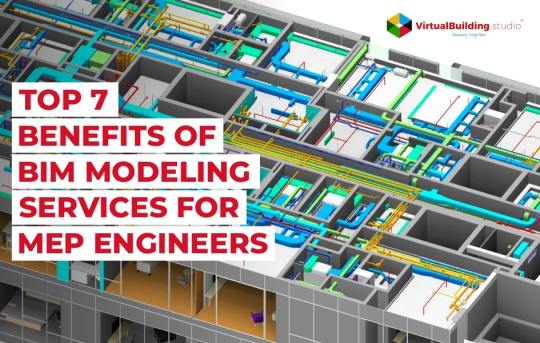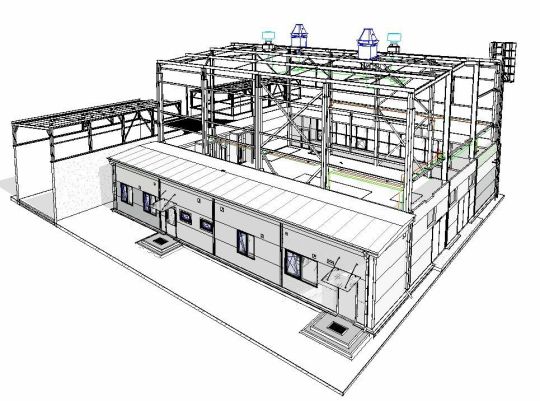#structural bim model
Text
youtube
In this video, we delve into the world of CAD to BIM Model Conversion, exploring the incredible potential it holds for your design projects. Discover the secrets to streamline your design process and enhance your project's success. Whether you're a beginner or a pro, this guide will be your key to success.
Watch the complete video here, https://youtu.be/HoMTniijjQE
#cad to bim#3d bim modeling#architectural bim model#structural bim model#mep bim model#cad to bim model#cad to bim conversion#Youtube
0 notes
Text
Enhancing Safety with BIM Services in Structural Projects

BIM is a groundbreaking technology in the AEC sector. However, safety is always the prime concern for professionals in every construction project. BIM services provide safety analysis and planning for structural projects and ensure reduced risk of accidents and injuries.
#structural bim services#revit structural modeling#bim structural modeling#bim modeling revit#bim modeling company#bim structural modeling services#structural engineering services#outsource structural bim services
2 notes
·
View notes
Video
youtube
How dynamo model warehouse in 30 minutes? | Modeling warehouse with dynamo
#youtube#dynamo#revitdynamo#bimrevit#structure#revit#steelstructure#bim#autodesk revit#building information modeling#bim automation#warehouse
2 notes
·
View notes
Text
#Bim#Bim Informationmodelling#Structural bim services#bim in construction building#information modeling#bim building information#modeling company#3d bim#bim engineering#3d modeling bim in construction industry#bim in architecture#Structure BIM modelling#BIM modelling
0 notes
Text

Elevate your structural projects with Silicon Engineering Consultant's premier Structural BIM Services In Chicago.
Visit Us:
#Structural 3D Modeling#Schematic Design Documentation#Structural Drafting and Detailing#Revit 3D Modeling#As-Built Modeling and Drawing#Structural BIM Design and Drafting Services#Structural BIM CAD Services#BIM Modeling Services#Structural BIM Modeling Services#Structural BIM Engineering Services
1 note
·
View note
Text

BIM Process & Lifecycle In Building Construction
Building Information Modeling encompasses the entire process of planning, designing, constructing, operating, and maintaining a building or infrastructure project using a digital representation.
3D Planning and Design
Building Information Modeling (BIM) begins with the creation of a detailed 3D model that includes architectural, structural, and MEP (Mechanical, Electrical, Plumbing) components. This phase allows for visualization, analysis, and optimization of the design before construction begins.
Operation and Maintenance
After construction, the BIM model serves as a valuable resource for managing the building throughout its lifecycle. Facility managers use the model for maintenance, repairs, and renovations, ensuring the building operates efficiently.
Project Collaboration
BIM facilitates seamless collaboration among all stakeholders, including architects, engineers, contractors, and owners. The shared model ensures everyone is on the same page, reducing errors and improving communication.
Construction
During construction, the BIM model guides the building process, providing detailed information on materials, timelines, and workflows. This enhances accuracy, reduces waste, and ensures the project stays on schedule and within budget.
By integrating these stages, BIM enhances collaboration, reduces costs, and improves the overall quality and sustainability of construction projects.
0 notes
Text
Enhancing Formwork Detailing: The Transformative Power of BIM Modeling for Structural Contractors

Introduction
In the realm of construction, precision and efficiency are paramount. Structural contractors are tasked with the responsibility of translating architectural designs into tangible structures, often facing challenges in formwork detailing. Formwork, the temporary mold into which concrete is poured, demands meticulous planning and execution to ensure structural integrity and cost-effectiveness. Here's where Building Information Modeling (BIM) steps in as a game-changer, revolutionizing formwork detailing processes and empowering contractors to achieve unparalleled efficiency and accuracy.
Understanding Formwork Detailing
Formwork, often referred to as shuttering, serves as the temporary mold into which concrete is poured and allowed to harden. It's a critical component in concrete construction, influencing project timelines, costs, and structural integrity. Formwork detailing involves meticulous planning and design to ensure the formwork accurately conforms to the desired shape and dimensions of the concrete element being cast. Any inaccuracies or inefficiencies in formwork detailing can lead to delays, cost overruns, and compromised quality.
The BIM Advantage
Enter Building Information Modeling (BIM), a revolutionary technology that has reshaped the landscape of the construction industry. BIM is a digital representation of the physical and functional characteristics of a building, offering a comprehensive platform for collaborative design, visualization, and simulation. When applied to formwork detailing, BIM unlocks a myriad of benefits for structural contractors:
1. Enhanced Visualization and Planning
BIM enables contractors to visualize formwork designs in a 3D digital environment, providing a clear understanding of the structure's geometry and spatial relationships. With sophisticated modeling tools, contractors can simulate various formwork scenarios, optimizing layouts for efficiency and material utilization. This level of visualization facilitates early-stage problem-solving and informed decision-making, mitigating risks and minimizing costly errors during construction.
2. Accurate Quantity Takeoffs
One of the primary challenges in formwork detailing is accurately estimating material quantities. BIM streamlines this process by generating precise quantity takeoffs based on the digital model. By extracting data directly from the BIM environment, contractors can calculate the required formwork components with unparalleled accuracy, eliminating guesswork and potential overruns. This precision not only optimizes material procurement but also contributes to cost savings throughout the project lifecycle.
3. Seamless Collaboration and Coordination
BIM serves as a collaborative platform, facilitating seamless communication and coordination among project stakeholders. Structural engineers, architects, contractors, and subcontractors can work concurrently within the BIM environment, sharing real-time updates and feedback. This integrated approach fosters transparency and alignment throughout the formwork detailing process, minimizing conflicts and maximizing productivity. By breaking down silos and fostering collaboration, BIM ensures that everyone is on the same page, driving efficiency and synergy across the project team.
DISCUSS YOUR PROJECT REQUIREMENTS WITH OUR EXPERTISE: https://prototechsolutions.com/services/bim-modeling-services/
4. Clash Detection and Risk Mitigation
Formwork detailing involves intricate geometries and complex structural configurations, increasing the likelihood of clashes and interferences during construction. BIM's clash detection capabilities enable contractors to identify and resolve conflicts proactively, preventing costly rework and delays onsite. By simulating the formwork assembly within the digital model, contractors can anticipate potential clashes and design constraints, optimizing the construction sequence and minimizing disruption. This proactive approach to risk mitigation enhances project predictability and ensures smooth execution from design to delivery.
5. Iterative Design and Optimization
BIM empowers contractors to iterate on formwork designs iteratively, exploring various alternatives and optimizations before finalizing the construction plans. By leveraging parametric modeling and computational analysis, contractors can refine formwork layouts based on performance criteria, such as load-bearing capacity, material efficiency, and constructability. This iterative design process fosters innovation and continuous improvement, allowing contractors to achieve optimal solutions that balance technical requirements with project constraints. From complex geometries to challenging site conditions, BIM equips contractors with the tools and insights needed to tackle formwork detailing with confidence and efficiency.
6. Quantification and Cost Estimation
Another noteworthy advantage of BIM in formwork detailing is its ability to facilitate accurate quantification and cost estimation. BIM software enables automated takeoff procedures, extracting precise quantities of formwork materials based on the digital model. This data-driven approach eliminates the guesswork associated with manual quantity surveys and ensures that contractors procure the right amount of materials, reducing excess inventory and minimizing project costs. Additionally, BIM enables real-time cost tracking and analysis, empowering contractors to make informed decisions throughout the construction process.
7. Sustainability and Environmental Impact
In an era of increased emphasis on sustainability, BIM offers opportunities to minimize the environmental footprint of construction activities, including formwork detailing. By optimizing formwork designs for material efficiency and reducing waste, contractors can contribute to resource conservation and waste reduction efforts. Additionally, BIM enables lifecycle assessment and analysis, allowing stakeholders to evaluate the environmental impact of formwork materials and construction processes. By making informed decisions based on sustainability criteria, contractors can align formwork practices with green building principles and industry standards.
Conclusion:
In conclusion, BIM modeling represents a paradigm shift in how structural contractors approach formwork detailing. By harnessing the power of digital technology, contractors can enhance visualization, streamline design processes, and optimize construction workflows. From improved coordination and cost estimation to enhanced safety and sustainability, the benefits of BIM in formwork detailing are manifold. As the construction industry continues to evolve, embracing BIM as a fundamental tool for formwork detailing is essential for staying competitive and delivering projects of the highest quality. By embracing innovation and leveraging BIM capabilities, structural contractors can elevate formwork detailing to new heights, paving the way for a more efficient, resilient, and sustainable built environment.
#3D BIM MODELING#revit family creation#formwork detailing services#BIM modeling#structural contractors#formwork design#formwork detailing
0 notes
Text
BEP Consultants in Toronto:-
Looking for a pre-construction solution that can help you with their guidance? The time has come to choose us and contact us. We provide top-quality BIM services and consulting. Our team has already completed countless projects and now it's your time to choose us. https://www.seekcurity.com/bep-consultancy.html

#BIM Services in Canada#Structural Detailing Company in Toronto#MEP BIM Services in Canada#BIM Execution Plan in Canada#Point Cloud BIM Modelling Services in Canada
0 notes
Text
Affordable Building Information Modeling (BIM) Services in Oxford, UK

Silicon EC UK Limited is the most trusted and fastest-growing engineering company in the UK which provides Building Information Modeling Services to our clients. It specializes in providing high-quality BIM Drafting Services, BIM Drawing Services, and 3D BIM Modelling structures with the help of BIM Software.
Visit our website :
#bim services#bim consultant#bim design#bim drafting#3d bim modeling services#structural bim services#bim revit#Building Information Modeling Services#Revit BIM Modeling Services#BIM Services#BIM Shop Drawing Services#BIM Clash Detection Services#LOD BIM Service#Revit BIM Family Creation Services#Structural BIM Services#BIM Coordination Services#Point Cloud to BIM Services#BIM 3DModeling Services#Building Information Modeling#Revit BIM Services#BIM Design Services#BIM Consulting Services#bim service providers#BIM Services London#bim service provider#BIM service providers in London#BIM drafting London#bim modelling services#bim services provider#BIM service provider London
0 notes
Text

The MEP system coordination is crucial for locating system components in congested spaces, avoiding obstructions, and seamless alignment of design and operational requirements. The MEP sector is critical for the project’s overall success, BIM MEP modeling services catalyze this process and increase project efficiency.
#BIM Modeling Services#MEP BIM Modeling Services#MEP BIM Modeling for Engineers#MEP#Structure#Architectural
1 note
·
View note
Text

Elevating Construction BIM Structural Service
Modulus Consulting offers comprehensive BIM structural services at every stage of your project. From initial design to facilities management, we have the expertise to meet all your needs. Trust us for accurate structural analyses and detailed structural projects. Let us bring your vision to life.
#Revit BIM Services#BIM 360 Model Coordination#3D BIM Modeling Services#Reality Capture 3D#Structural BIM Services#BIM Facility Management Services
0 notes
Text
The Prominence of Structural BIM Services for Engineers

Structural BIM services offer various benefits, especially to structural engineers. The importance of structural BIM modeling in AEC projects eases the complex process, reduces rework, and promotes cost savings. Understand structural BIM services for engineers in detail.
#structural bim services#revit structural modeling#bim structural modeling#bim modeling revit#bim modeling company#bim structural modeling services#structural engineering services#outsource structural bim services
1 note
·
View note
Text
Steel Detailing Services
Steel detailing services involve the creation of detailed drawings and plans that specify the requirements for fabricating and erecting steel structures. These intricate designs encompass precise information on dimensions, connections, materials, and other essential elements crucial for construction. Steel detailing services play a pivotal role in ensuring accuracy and compliance with industry standards, aiding fabricators, erectors, and engineers in executing the structural steelwork efficiently. These drawings serve as a blueprint for constructing buildings, bridges, industrial plants, and various steel-based structures.

#Structural Steel Detailing#Steel Detailing and Metallic BIM Modeling Services#Steel Detailing Services
0 notes
Text
#Revit BIM modeling projects in Architectural services#BIM modeling projects in Structural services#Revit BIM modeling projects for Commercial Sector
1 note
·
View note
Text
Exploring the Diverse Landscape of BIM Software in Construction: A Comprehensive Guide
Introduction:
In the ever-evolving field of construction, Building Information Modeling (BIM) has emerged as a transformative technology that revolutionizes the way buildings are designed, constructed, and managed. BIM software plays a pivotal role in enhancing collaboration, improving efficiency, and minimizing errors throughout the construction process. This article delves into the various…

View On WordPress
#architectural design software#as-built documentation#BIM model accuracy#BIM software#Building Information Modeling#collaboration platforms#construction industry advancements#construction management software#construction project efficiency#Construction Technology#cost estimation tools#facility maintenance optimization#facility management solutions#laser scanning technology#LiDAR applications#MEP systems modeling#point cloud integration#project stakeholders collaboration#real-time coordination#structural engineering tools#sustainable building practices
0 notes
Text
Exploring the Latest Trends in Structural BIM Modeling With Technology In the Construction Industry

In the dynamic realm of construction, where precision meets innovation, Structural Building Information Modeling (BIM) stands as the vanguard of technological evolution. In this blog post, we embark on a journey to explore the latest trends in Structural BIM Modeling, uncovering how technology is reshaping the construction industry, one blueprint at a time.
Digital Twins: A Parallel Universe for Construction:
The advent of the digital twin revolutionized manufacturing. We will delve deeper into the concept of digital twins and explore how some of the physical systems are designed. From real-time analytics to predictive maintenance, digital twins are changing the game, enabling architects and engineers to visualize and execute projects more efficiently than ever before
Artificial Intelligence and Machine Learning: The Architects' Silent Partners:
Witness how structural BIM modeling and artificial intelligence are combined. We will look at how machine learning algorithms are improving BIM's predictive power, automating tedious work, and providing insights that were previously only available to humans. Construction projects stand to benefit greatly from AI's emergence as a vital in increasing efficiency and error resistance.
Cloud-Collaboration: Building Bridges in the Digital Sky:
Cloud-based development has emerged as a game-changer enabling seamless communication between project stakeholders. From architects to contractors, the cloud enables real-time collaboration, speeds up decision-making, and reduces delays. Let’s unleash the transformative power of the cloud to make the construction industry transparent, simple, and efficient.
Augmented and Virtual Reality: Walking Through the Blueprint:
Take a step into the future by using augmented reality (AR) and virtual reality (VR) in structural BIM modeling. We will explore how AR/VR is revolutionizing project visualization and delivering immersive experiences for architects, engineers, and clients alike. This technology not only changes processes but also improves production and on-site training programs.
IoT and Sensors: The Pulse of Structures:
Dive into the Internet of Things (IoT) and sensor integration in manufacturing. Explore how real-time data from sensors provides critical insights into system health, safety, and performance. As systems become smarter, the role of IoT in ensuring durability, security, and optimal functionality becomes more apparent.
Generative Design: Sculpting Tomorrow's Landmarks:
Generative design algorithms are reshaping the way structures are conceived. We'll explore how these algorithms optimize designs based on various parameters, including performance, cost, and sustainability. Witness the synergy between human creativity and machine intelligence as generative design propels the industry towards more innovative and efficient solutions.
Conclusion:
As we conclude this exploration of the latest trends in Structural BIM Modeling, it's evident that technology is propelling the construction industry into uncharted territories. From digital twins to AI, cloud collaboration, AR/VR, IoT, and generative design, the future promises a construction landscape where precision and creativity harmonize to build structures that not only stand tall but stand as testaments to human ingenuity and technological prowess. The blueprint of tomorrow's skyscrapers is being drawn today, and it's a fascinating journey into the intersection of construction and cutting-edge technology.
Ready to convert your construction initiatives with modern-day Structural BIM Modeling? Look no further than Smartcadd Engineering Services. Our knowledge and commitment to excellence make us the correct associate in your construction endeavors. Contact us today to discover the destiny of production generation!
0 notes